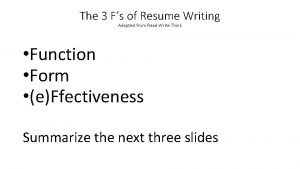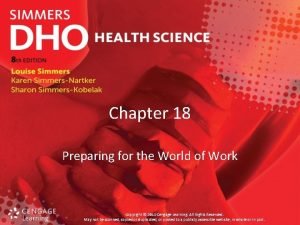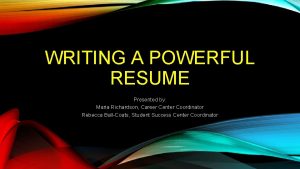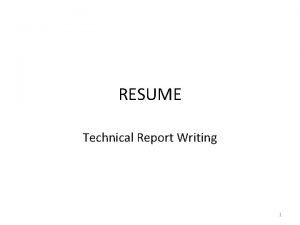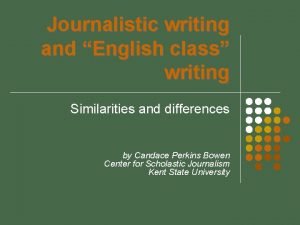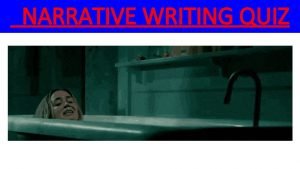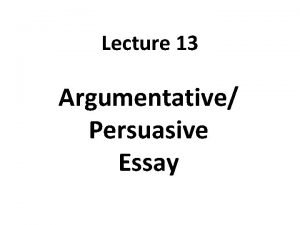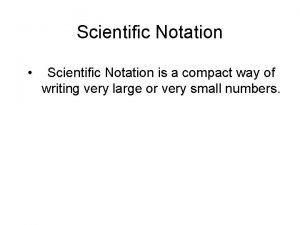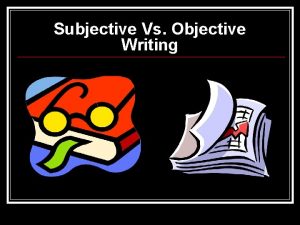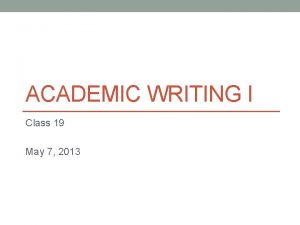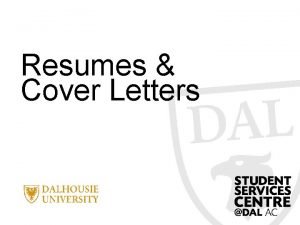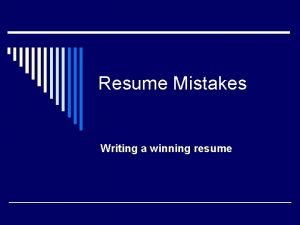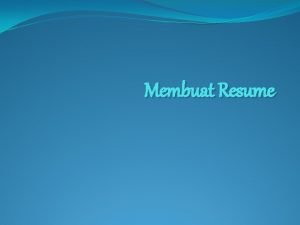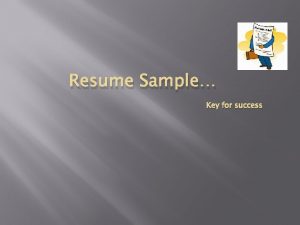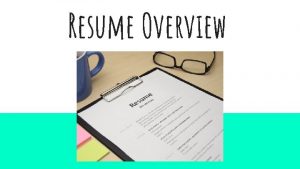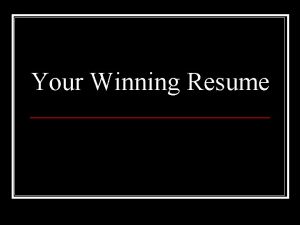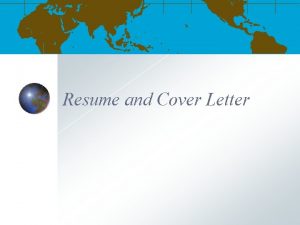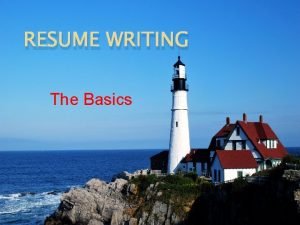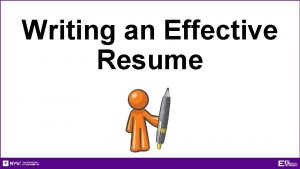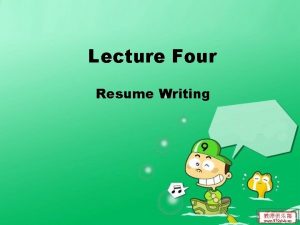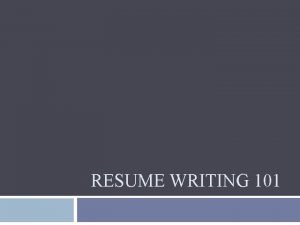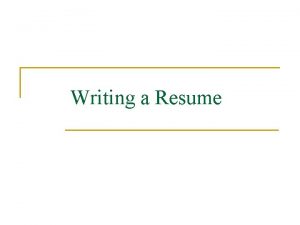RESUME WRITING Resume writing A RESUME is a
















- Slides: 16

RESUME WRITING

Resume writing �A RESUME is a brief account of one's life and career, especially as required in an application for employment. �It should give brief details about 1. You 2. Your personal experiences 3. Your education, training and work experience �It should promote you.

Why your resume is important? � It’s the first meeting between you and a prospective employer. � They tell the employer a great deal about you. � They tell you a great deal about yourself. � Its purpose is to get the interview.

Structure of a traditional resume 1. Full name 2. Address and Telephone number 3. Age, Date and place of birth 4. Nationality 5. Marital status 6. Number of children 7. Dates and places of primary, secondary and tertiary education 8. Educational qualifications (Public examinations taken and grades / degrees achieved) 9. Employment record 10. More detailed information about current position held including salary 11. Interests 12. Names of two people who will provide references

�A successful resume is the product of careful thought and planning. �The employer is looking for an applicant, who has the right experience, skills and personal qualities for the job. �The person appointed is likely to be the one who not only possesses all these but also presents them in the most attractive way.

Skills Ask Yourself. �Which skills did I use here that I already had? �Which skills did I improve on or consolidate? �What new skills did I learn?

Examples �Organizing events �Interviewing �Chairing meetings �Supervising �Meeting the public �Training staff �Giving advice �Making presentations �Trouble shooting

Personal qualities � accurate �adaptable �astute �can work under pressure �careful �committed �competent �cooperative �courteous

Personal qualities �decisive �dedicated �energetic �methodical �meticulous �orderly �organized �positive �practical

Personal qualities �extrovert �flexible �friendly �get on well with other people �good communicator �good sense of humour �good time-keeper �hard working �imaginative

Personal qualities �independent worker �lively �logical �loyal �self confident �self motivated �sensitive �thorough �thoughtful �vigilant �work well with others

Types of resumes �Chronological �Functional

Chronological resume construction �A Chronological resume presents your education and work experience either in the order in which they happened, or in the reverse order, with your most recent experience first. Its contents include: �Contact information �Objective �Work experience �Education

Functional resume construction A functional resume is organized based on your skills and qualities. The advantage is you can focus on your strength without having to spell out relative inexperience or periods of unemployment. Its contents include: � Contact information � Objective � Skills � Work experience � Education �

Other Tips. . �After writing, proofread your resume �Do not use a bunch of fancy lettering that is hard to understand �Stick to one type of font �Make sure your paper is white and of good weight, not flimsy �Word-process it and store it in a computer file �Make sure that you check and if necessary update it before sending it off �Take a print out of the file copy of the particular version you use for each application

 What are the 3fs in cover letter
What are the 3fs in cover letter What isresume
What isresume 18:1 preparing for the world of work
18:1 preparing for the world of work Maria richardson font
Maria richardson font Report writing skills resume
Report writing skills resume Journalistic and literary writing similarities
Journalistic and literary writing similarities Writing workshop: narrative writing quiz
Writing workshop: narrative writing quiz Technical academic language
Technical academic language Examples of active voice
Examples of active voice Persuasive vs argumentative
Persuasive vs argumentative Argumentative essay vs persuasive
Argumentative essay vs persuasive Writing 5 i is a compact way of writing
Writing 5 i is a compact way of writing Examples of subjective writing
Examples of subjective writing Formal and informal writing examples
Formal and informal writing examples Business writing vs academic writing
Business writing vs academic writing Informal writing style examples
Informal writing style examples Sample of objective in resume
Sample of objective in resume
